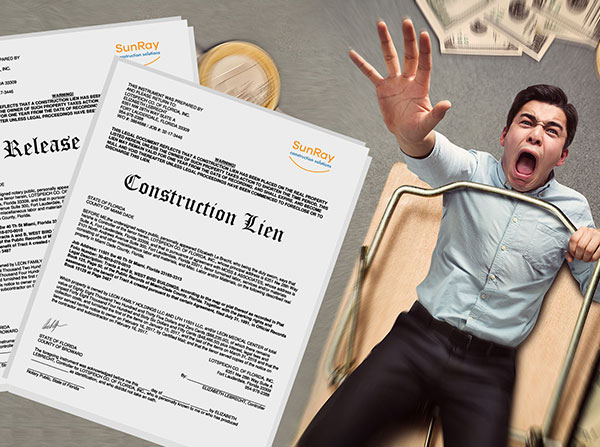Lien Waivers in Residential vs. Commercial Construction: What You Need to Know
Lien waivers in residential and commercial construction require clear communication, compliance with state laws, and thorough documentation for validity and rights protection.
Last updated:
Oct
14
,
2025
Published:
Apr 08, 2024
2.2 Mins
Read
Lien waivers are the unsung heroes of the construction industry, keeping projects on track and protecting everyone involved. But did you know their use can differ between residential and commercial construction?
In this blog we're diving deep into the world of lien waivers, exploring the key distinctions and similarities you need to know when working on either residential or commercial construction project.
Understanding Lien Waivers
Before we compare, let's understand what a lien waiver is. A lien waiver is a legal document that says, "Hey, I got paid for my work, so I won't put a lien on the property." A lien, in this case, is a legal claim that allows unpaid contractors or suppliers to stake their claim on a property until they receive their dues. Lien waivers prevent this mess, ensuring everyone gets paid and the project keeps moving.
Residential Construction: Keeping it Simple
In residential construction projects, lien waivers are commonly used to protect homeowners and ensure that contractors and suppliers are compensated fairly. There are typically two types of lien waivers used in residential projects. Here's the basic rundown:
- Conditional Lien Waiver on Progress Payment: This type of lien waiver is used when a partial payment is made during the construction process. It indicates that the contractor or subcontractor will waive their lien rights up to the amount specified in the waiver upon receiving the payment. However, it's crucial to note that this waiver only covers work, or materials included in the payment. In simple terms, this waiver says, "I waive my lien rights for the work I've done so far once I receive this payment." It's like a mini receipt for each stage of the project.
- Unconditional Lien Waiver on Final Payment: Once the project is complete, contractors and subcontractors may be required to provide an unconditional lien waiver upon receiving the final payment. This waiver releases all lien rights, ensuring that the property owner has clear title to the property. In simpler terms, this waiver says, "I'm happy with everything and won't put a lien on your property!"
To better understand your lien rights, check out our guides on the Notice to Owner Florida and the Florida Mechanics Lien.

Commercial Construction: A More Complex Game
In commercial construction, lien waivers serve a similar purpose but may have different requirements and formats compared to residential projects. Here are some key aspects of lien waivers in commercial construction:

- Customized Waivers: Commercial projects often involve complex contracts and multiple parties. As a result, lien waivers in commercial construction may be customized to address specific payment terms, milestones, and lien rights.
- Negotiation: Unlike residential projects where lien waivers are more standardized, commercial construction may involve negotiations regarding lien waiver terms. Parties may negotiate the scope of the waiver, the timing of payments, and other related aspects.
- Joint Checks: In some commercial construction scenarios, joint checks may be used to issue payments to subcontractors and suppliers. This process can impact the timing and content of lien waivers, ensuring that all parties are satisfied with the payment arrangements.
Universal Tips for Smooth Sailing
Whether you're building a dream home or a skyscraper, here are some golden rules for navigating lien waivers:
1. Clear Communication: All parties must communicate payment terms, lien waivers, and expectations clearly to avoid misunderstandings.
2. Compliance with State Laws: Understand and follow local laws regarding lien waivers, including deadlines, formats, and specific provisions.
3. Documentation: Maintain detailed records of payments, contracts, and waivers to protect your rights and ensure validity.
Protect Your Rights with a Notice to Owner
Sending a notice to owner is the first step to secure payment on construction projects. Learn how a notice to owner Florida helps protect your lien rights and ensures you get paid.
The Takeaway
Lien waivers are the silent guardians of construction projects, ensuring everyone gets paid and the focus stays on getting the job done. By understanding the nuances of residential vs. commercial lien waivers, you can navigate the process smoothly and avoid potential legal roadblocks. Remember, clear communication, legal compliance, and thorough documentation are your keys to success!
Sunray Construction Solutions offers professional "Notice to Owner Florida" services to help you secure your mechanics lien florida rights in the construction industry. Looking for a free Notice to Owner form in Florida? Get your free, editable "Florida Notice to Owner Template" today for easy and accurate preparation.






.jpg)





